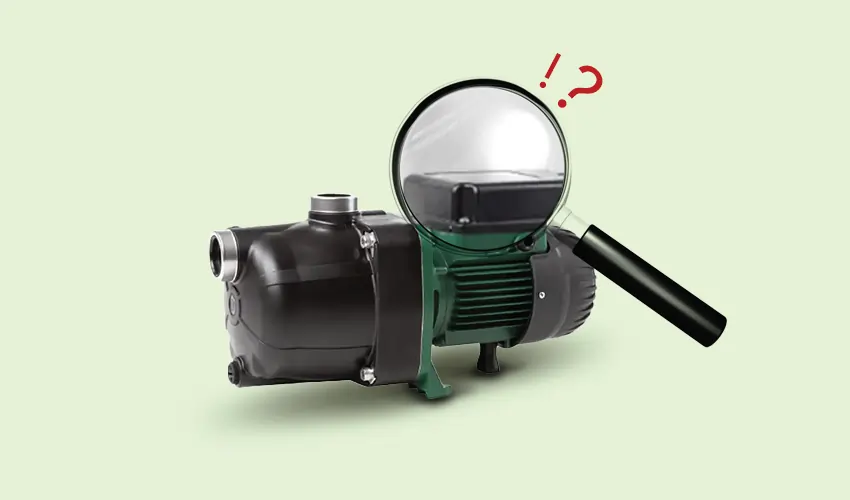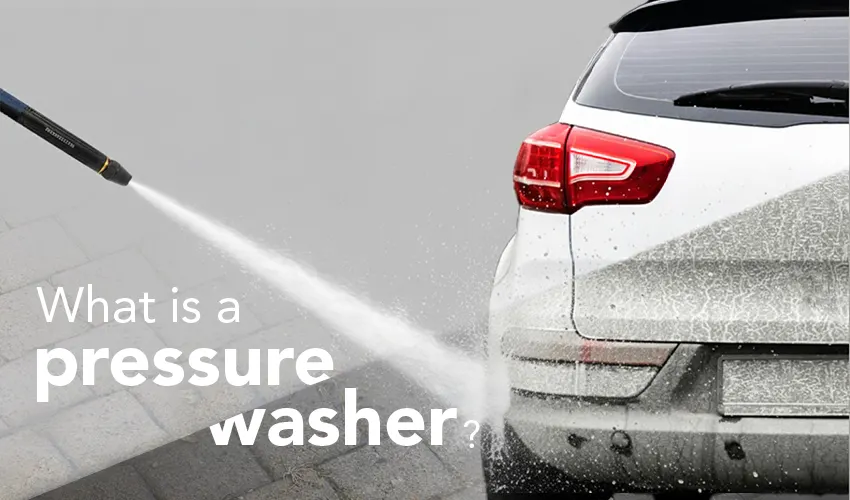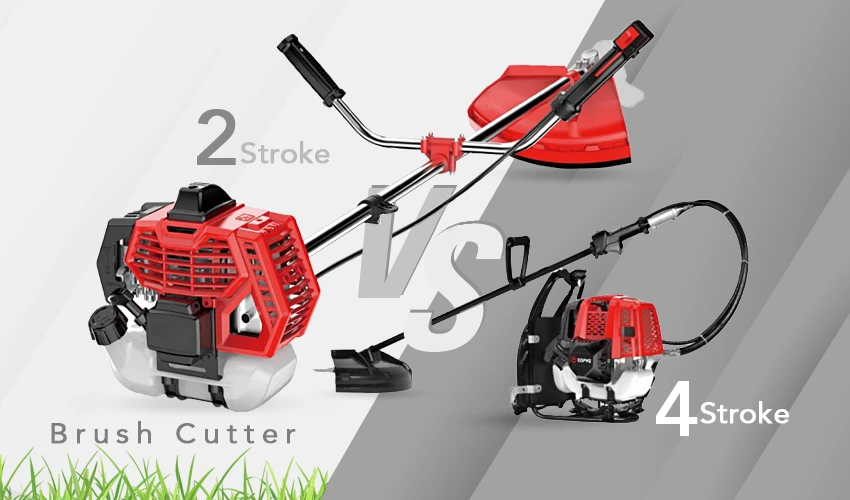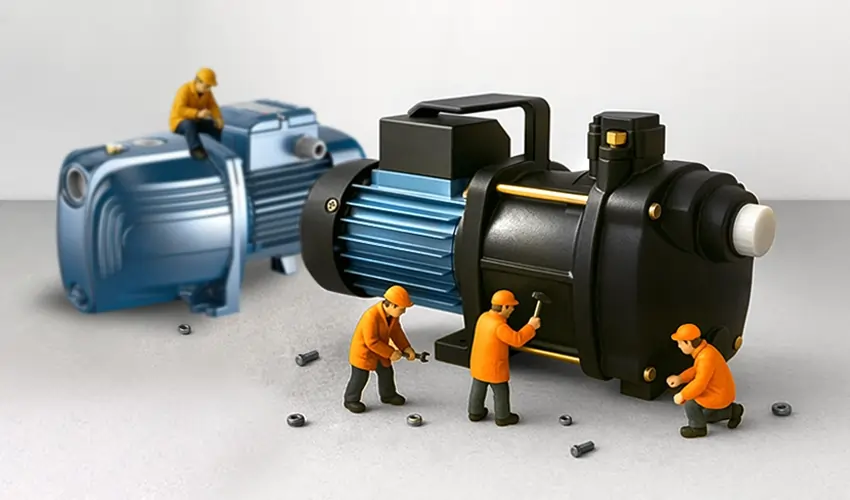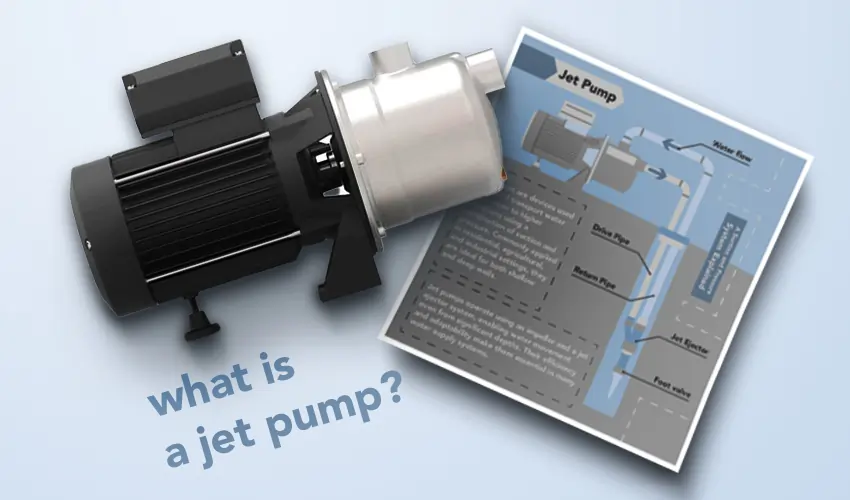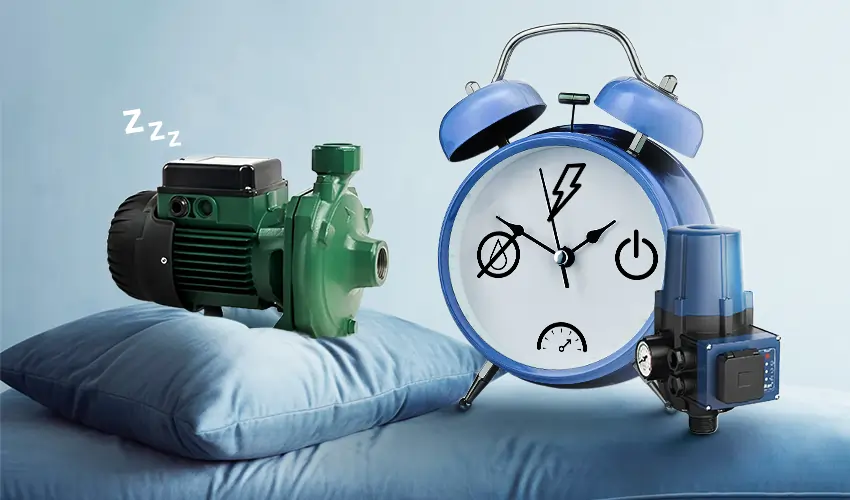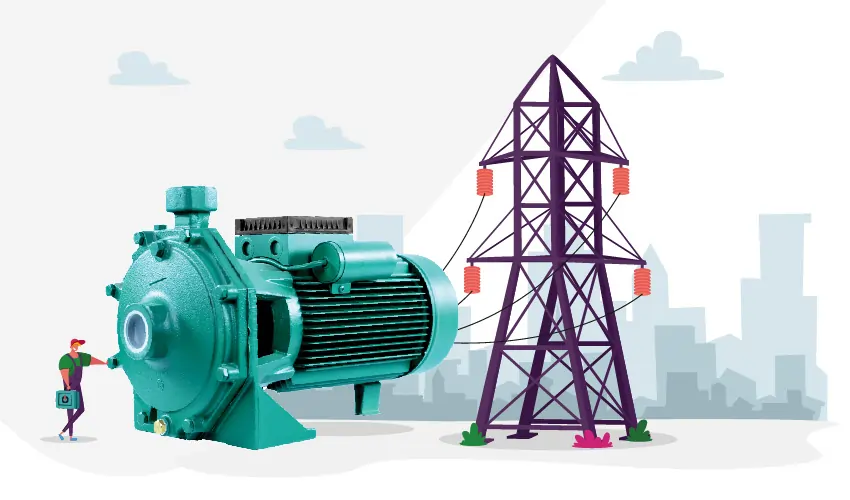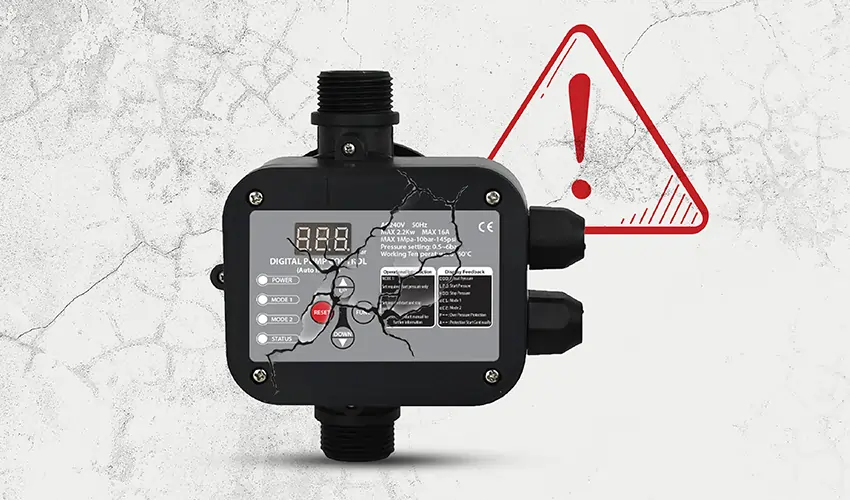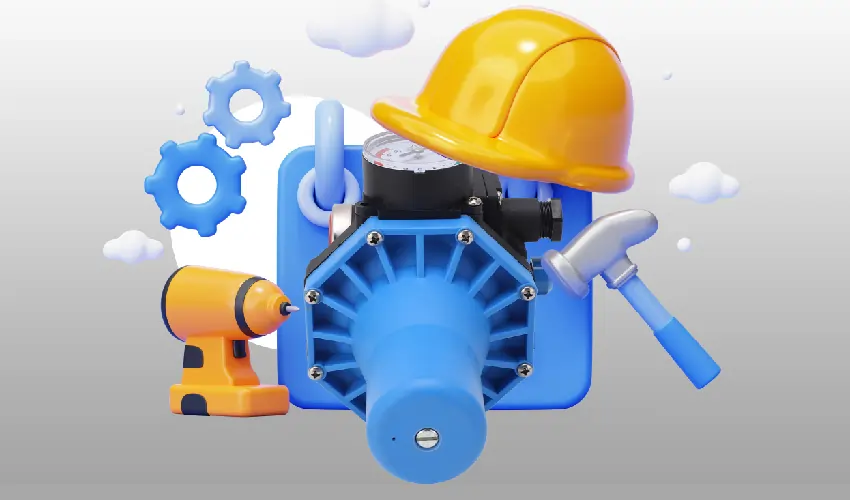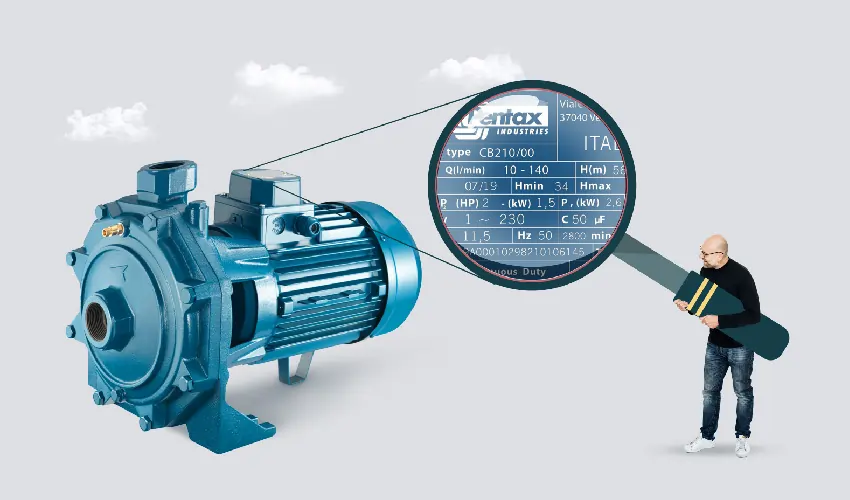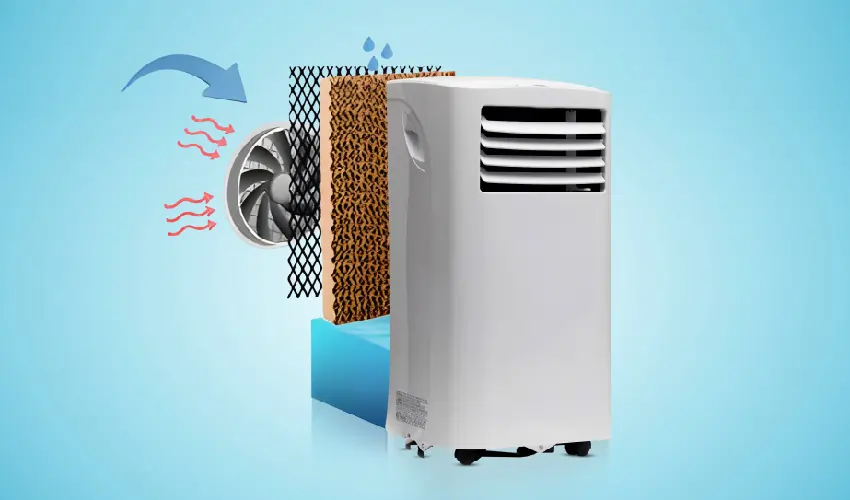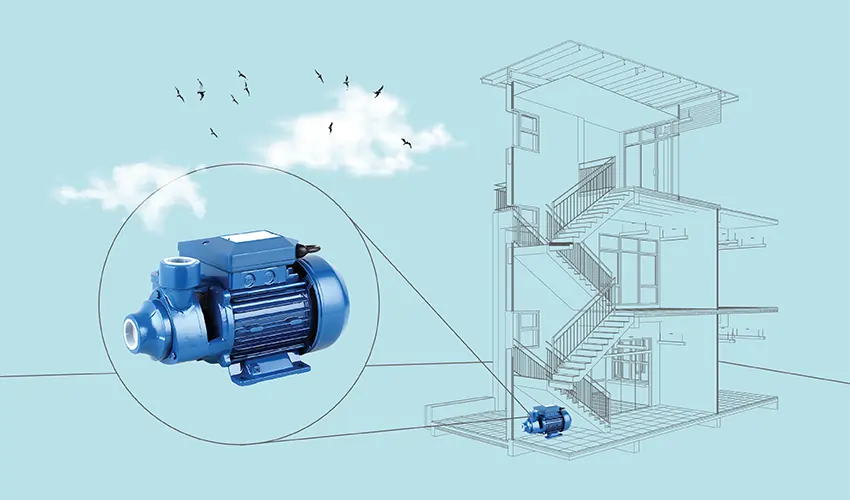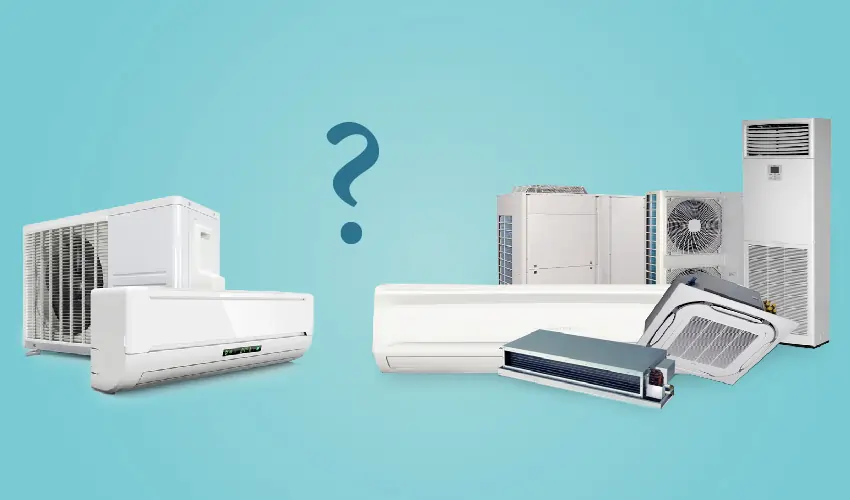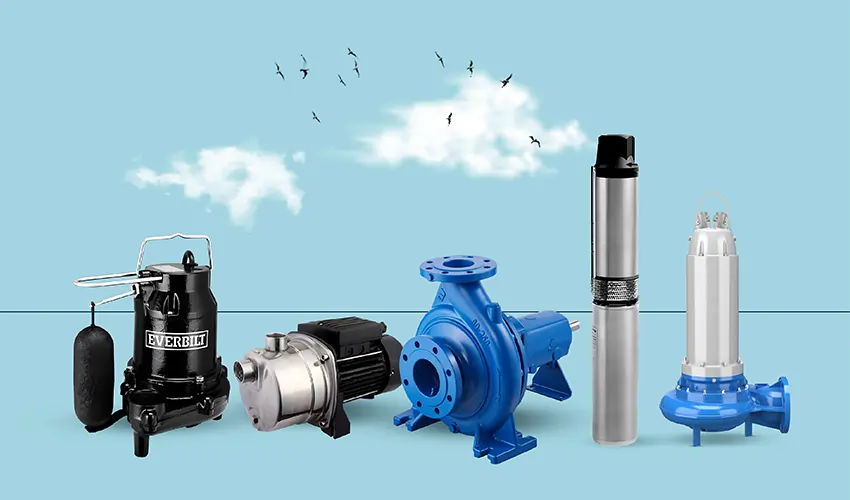Jet Pump Troubleshooting
A jet pump is a type of fluid pump that operates using a high-velocity jet of fluid to transport another fluid from one place to another. It works on the principle of creating a vacuum that sucks the fluid through a pipe. Typically used in applications such as water wells, garden sprinklers, and shallow wells, jet pumps are known for their efficiency in moving water.
Jet pumps can experience several common issues that impact their efficiency and functionality, so jet pump troubleshooting is a crucial to ensure their proper functioning. One prevalent problem is the loss of suction, which can be caused by various factors such as a clogged nozzle or venturi, air leaks in the suction line, or a damaged impeller. Another issue often encountered is the inability of the pump to build enough pressure, potentially due to a faulty pressure switch, worn-out pump components, or obstructions in the system.
Troubleshooting jet pump problems involves a systematic approach, starting with checking the most common causes and gradually examining more complex components. It’s crucial to ensure that the suction pipe is clear and the foot valve is functioning correctly. Regular maintenance, such as cleaning the nozzle and venturi and inspecting the pressure switch, can prevent many of these problems. However, more complex issues like a damaged impeller or motor problems may require professional intervention. In this article, we delve into the intricate details of jet pump troubleshooting, providing a comprehensive analysis and solutions to common issues faced by these systems.
Common Jet Pump Problems
Jet pumps are integral in various applications, from residential water supply to agricultural irrigation. While they are generally reliable, they can encounter several problems that hinder their performance. Understanding these common issues is crucial for effective jet pump troubleshooting and maintenance.
- Loss of Suction
One of the most frequent issues with jet pumps is losing suction, which can be due to several factors. A prime cause is air entering the suction line, which can happen if there are leaks in the piping or the pump is not adequately primed. Additionally, a clogged suction line, foot valve, or strainer can impede water flow, leading to suction loss.
- Low Pressure
Jet pumps may fail to generate sufficient pressure due to a malfunctioning pressure switch, a clogged nozzle or venturi, or a worn impeller. The pressure switch regulates the pump’s start and stop mechanisms, and if it’s faulty, the pump might not build enough pressure. A blocked nozzle or venturi disrupts the water flow dynamics essential for the pump’s operation, while a worn impeller can’t provide the necessary force to generate high pressure.
- Overheating
Overheating in jet pumps can occur due to overuse, insufficient water flow, or mechanical failures. If the pump runs for too long without adequate water, it can overheat, potentially causing significant damage to the motor and other components.
- Noisy Operation
Unusual noises from a jet pump, like banging, grinding, or whirring, often indicate mechanical issues. Cavitation, caused by vapor bubbles in a liquid, can create a loud noise. An imbalance in the pump’s impeller or motor bearings wearing out can also result in noisy operation.
- Electrical Issues
Jet pumps depend on electrical components for operation. Problems like tripped circuit breakers, blown fuses, or wiring issues can prevent the pump from functioning. Regular electrical maintenance is necessary to ensure the smooth operation of these components.
- Cycling On and Off
If a jet pump starts cycling on and off rapidly, it could be a sign of a waterlogged pressure tank or a faulty pressure switch. The pressure tank maintains a steady water pressure, but if it’s waterlogged, it loses its efficacy, causing the pump to cycle frequently.
- Corrosion and Wear
Over time, the internal components of a jet pump, like the impeller and the housing, can corrode or wear out, especially when pumping abrasive or corrosive fluids. Regular inspection and replacement of these parts are necessary to maintain pump efficiency.
- Seal Leaks
Seal leaks in jet pumps can lead to a drop in performance and water leakage. These leaks are often caused by normal wear and tear or by running the pump dry, which damages the seals.
What are Troubleshooting Jet Pump Startup Issues?
Jet pump Problem-solving involves a systematic approach to identify and resolve the root causes that prevent the pump from operating correctly. These issues can range from electrical problems to mechanical malfunctions. Understanding the common problems and their solutions is key to effective troubleshooting.
- Electrical Problems
The first step in troubleshooting is to ensure that the pump is receiving power. Check the circuit breaker or fuse box for any tripped breakers or blown fuses. Also, inspect the wiring connections to the pump and pressure switch for any loose or corroded connections. If the pump is connected through an extension cord, ensure it is of adequate gauge to handle the load.
- Pressure Switch Issues
The pressure switch controls the start and stop mechanisms of the pump based on the water pressure in the system. If it is faulty or incorrectly set, the pump may not start. Test the pressure switch for continuity with a multimeter and ensure it is set to the correct cut-in and cut-out pressure levels.
- Priming the Pump
Jet pumps need to be primed with water before they can start pumping. If the pump has lost its prime, it will not be able to pull water. To re-prime the pump, fill the priming port with water until it reaches the top, and then seal it back.
- Clogged Impeller or Nozzle
Debris or sediment in the water can clog the impeller or nozzle, preventing the pump from starting. Disassemble the pump to inspect these components and clean them if necessary.
- Air Leaks
Air entering the suction line can prevent the pump from priming and starting. Check all connections, including the foot valve and joints in the suction line, for leaks. Tighten or replace faulty components as needed.
- Motor Issues
If the pump’s motor is defective, the pump will not start. Listen for any humming sounds from the motor, indicating that it’s receiving power but not starting. This could be due to a seized motor, capacitor problems, or other internal faults. In such cases, consulting a professional or replacing the motor might be necessary.
- Water Source and Suction Lift
Verify that there is an adequate water source. For instance, if the water level in a well has dropped below the pump’s suction lift capability, the pump won’t start. The suction lift, including the vertical and horizontal distance from the water source to the pump, should be within the pump’s specifications.
- Valve and Piping Configuration
Ensure that all valves in the suction and discharge lines are open and that the piping is correctly configured. A closed valve or incorrectly installed pipe can prevent the pump from starting.
- Overload Protection
Some pumps come with thermal overload protection that shuts off the motor to prevent damage due to overheating. If the motor has overheated, allow it to cool down before attempting to restart the pump.
- Mechanical Wear and Tear
Over time, the pump’s mechanical components can wear out. Check for wear in parts like bearings, seals, and the impeller. Excessive wear can hinder the pump’s ability to start and operate.
Conclusion
In conclusion, jet pump resolving startup issues effectively requires a systematic approach that addresses both electrical and mechanical aspects. Regular maintenance and understanding the common problems—ranging from power supply issues and pressure switch malfunctions to priming and mechanical wear—can significantly aid in preventing and resolving these startup challenges. When in doubt, especially for complex problems, seeking professional help ensures safe and efficient resolution, ensuring the longevity and reliability of the jet pump.

